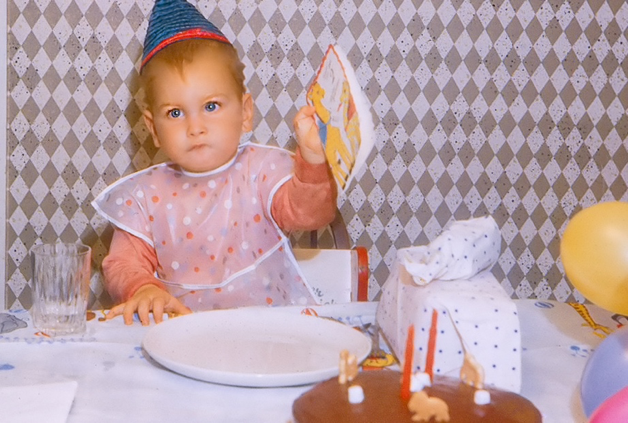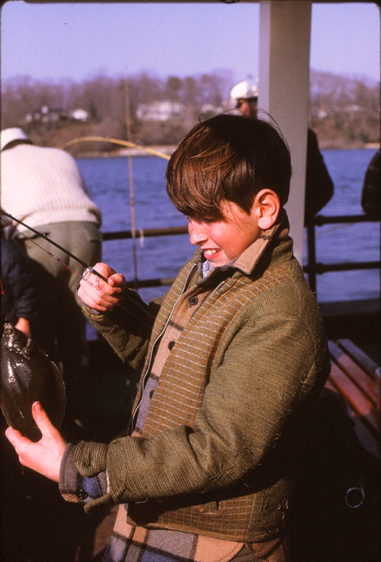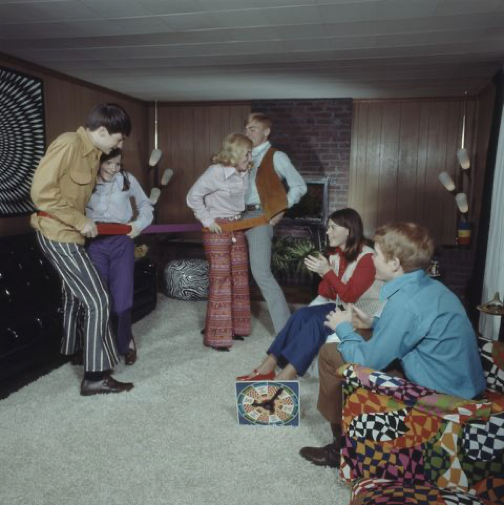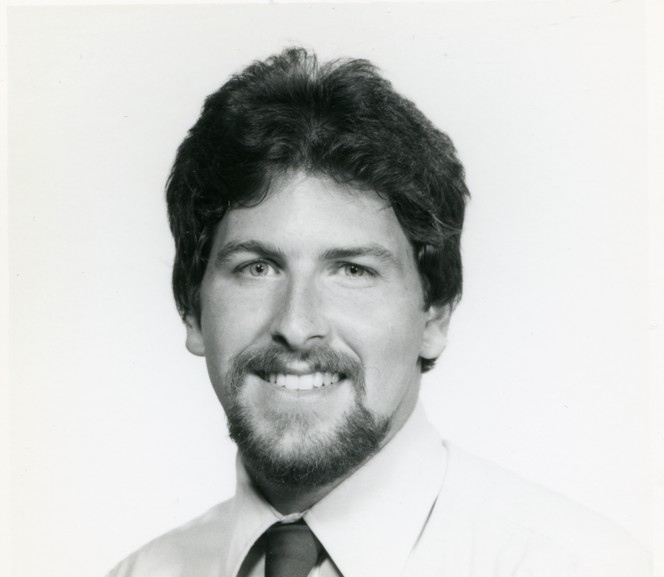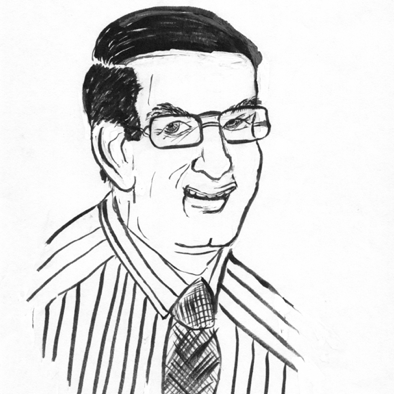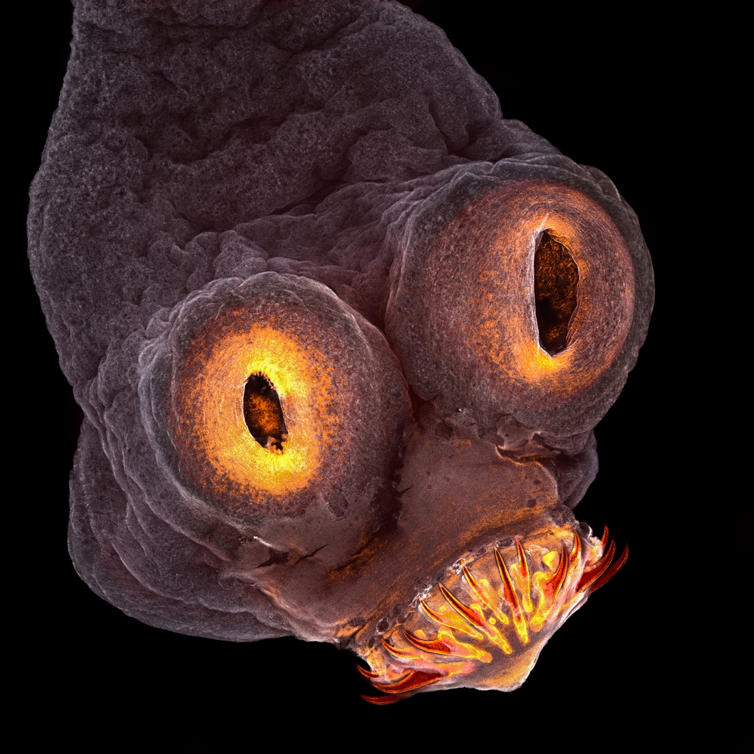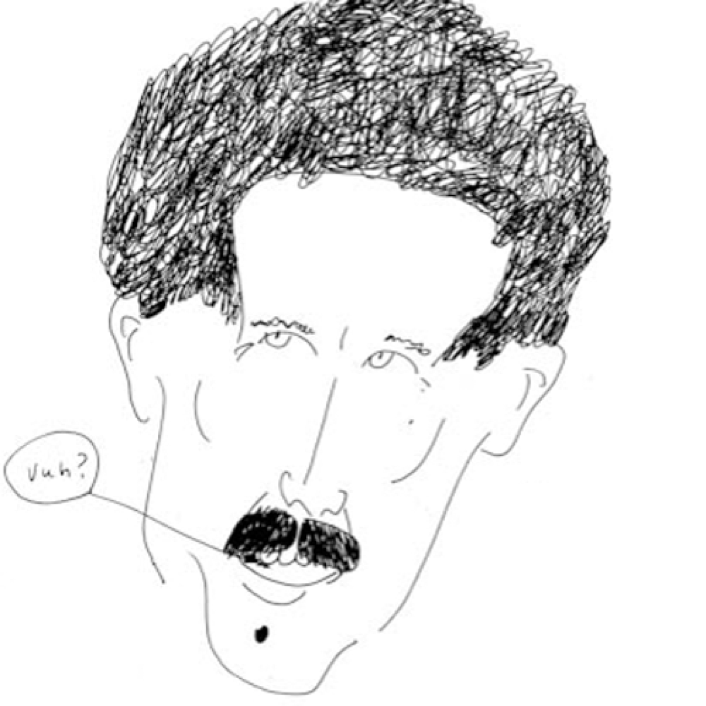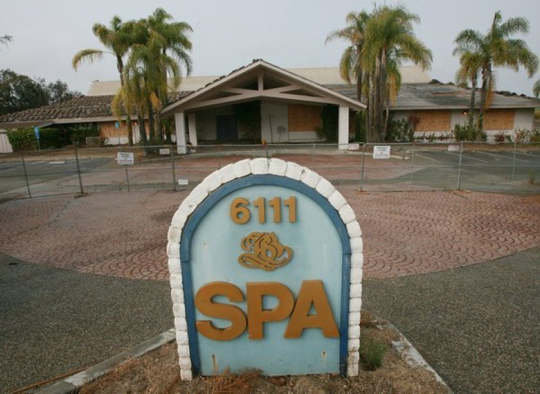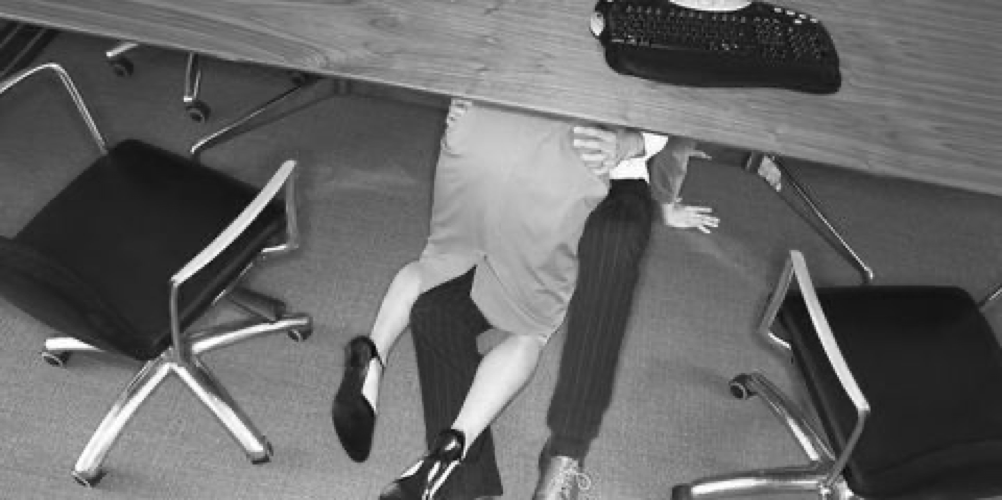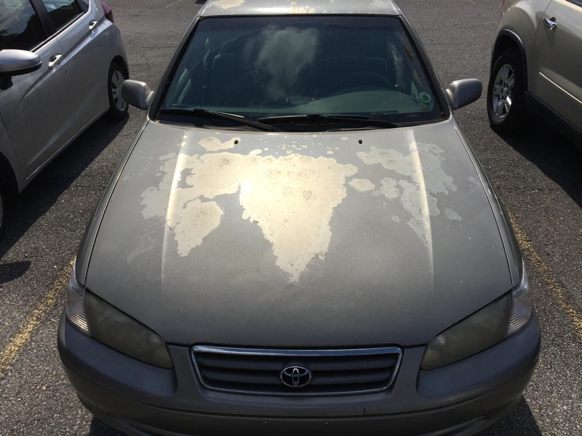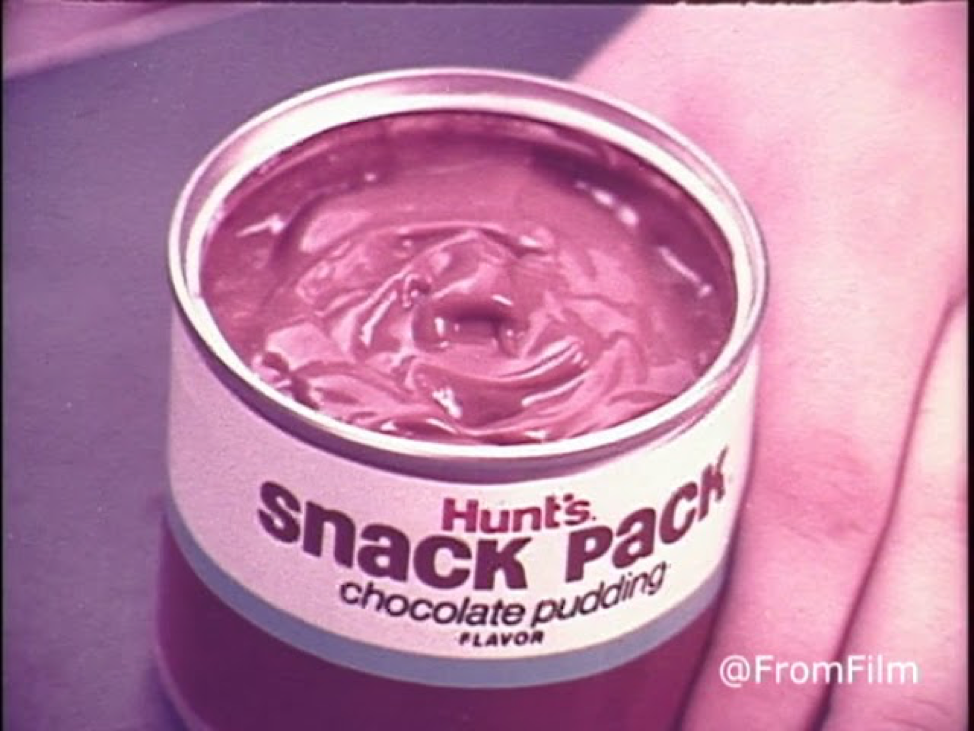
The Interview
by Steve Eilenberg
Chapter 1: Forming a bucket list
It was just before noon on Monday, June 30, 1969. David, my father, had just come home from rounding on his patients at St. Joseph’s Hospital. Sloppy Joe’s, as it was locally known, was a notorious institution in the fallow city of Patterson, New Jersey. It was run by a pack of nuns who lorded over dangerously incompetent doctors and overworked nurses. Living in proximity to Sloppy’s was reason enough to wear a medical bracelet stating, “If found unconscious, take me anywhere but St. Joseph or leave me here to die”.
S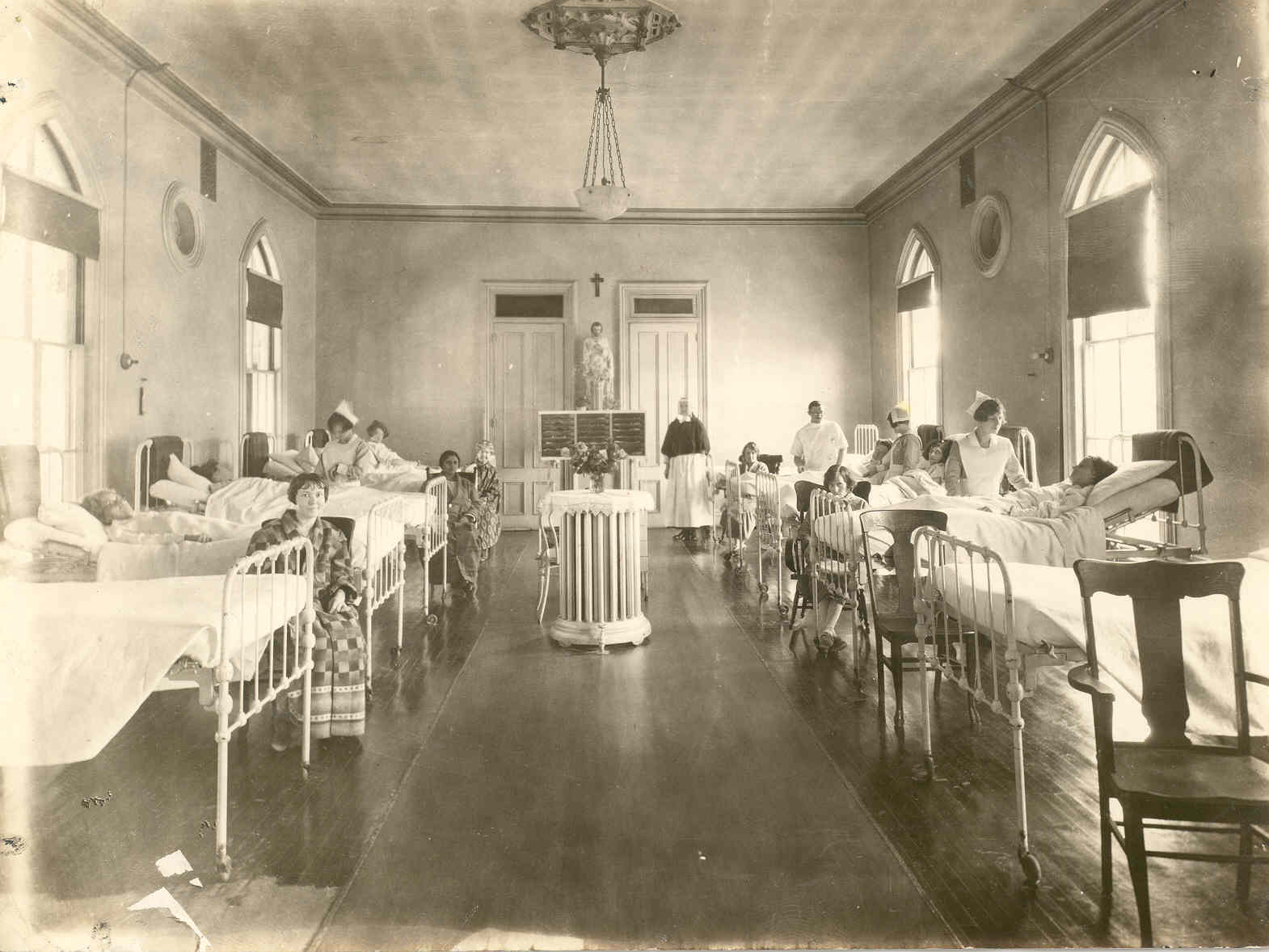 Sloppy Joe’s, in the day (for real)
Sloppy Joe’s, in the day (for real)
On this day, I was packing a musty dark blue and gold-trimmed trunk for summer camp and a high-noon, summer head shaving was coming. The creaking and groaning garage door announced my father’s return. David greeted Lady, our dog, with “Who’s a miserable mutt! Who’s a miserable mutt!”. Lady would nervously wag her partially tucked tail, snort and shake her head while the rest of us rolled our eyes for the millionth time.
The head-shaving ritual was always the last day of June and one of David’s meager joys in life. It ranked just below dumping used car oil in the woods behind the house and eating dates.
The event would unfold like this:
David: “Stevent (his peculiar Patterson, New Jersey dialect), get the vacuum and dog shears”.
Me: “Daaad! Please! You don’t have to do this…!”
David: “I’ve got patients coming! Stop whining!”. (I’ll mention here that his medical office occupied the first floor of the house).
I would drag out the baby blue Electrolux with chrome trim into the backyard and return for the dog shears. Several years earlier, the Doc Horowitz tick and flea dog shampoo in the all-purpose hair (and fur) grooming box leaked onto the shears, creating a sticky green mess that slowed down the blades to a sick crawl. Hair would be simultaneously cut and ripped out. I would sit, bare-chested, on a strapped and stained aluminum lawn chair with clippings falling on my shoulders and thighs. Bits of congealed flea shampoo dotted my head.
Lady got her tail stuck in the Electrolux, 1965 (a drawing of mine from 1965)
The birthmark
I never gave him the satisfaction of seeing me cry, instead wearing a steely mask of contempt mixed with humiliation. He would pause occasionally, clippers groaning, to assess his handiwork.
First crew cut, age 2. Happy birthday!
I knew it was going to be a doozy when he fell to his knees laughing, eyes overflowing with tears. Once composed, he would vacuum me with the blunt end of the chrome vacuum wand. Full suction and carelessness would pull ears and cheeks into the wand, leaving behind red marks. Arguably, these vacuum hickies distracted from the haircut. Step three was the “after photo”. Still bare-chested, sitting in the backyard, he would yell at me to smile as he memorialized his handiwork with the old Nikon F camera.
By summer’s end, the haircut grew into something like this…
On this Monday morning, June 30th, 1969, there would be no head shaving. I was 12 years old and my fleshy birthmark was carefully hidden by my long reddish-brown bangs. It was just a few minutes before office hours and I hopped on my Schwinn to get out of harm’s way. I returned around 3 pm and found my mother in the yard, donning her yellow Playtex dish-washing gloves and pruning clippers. She had been doing two of her favorite things; buying unwanted and unloved clothes for her kids and gardening. She approached me with an ear-to-ear smile and the shears. I’m thinking “You’re kidding me! You are going to cut my hair? With those!?”
I had escaped the summer buzz cut!
It made no sense. She had never given me the summer haircut and lacked David’s sadistic streak. Instead, she told me to look in the trunk of her car.
I walked over to the 1967 white Buick Rivera, opened the passenger door, and pressed the yellow button in the glove box. The trunk opened like a giant oyster. Inside was a Bamberger’s department store bag and in the bag was my first pair of bell-bottoms! Up to this point, Mary contended that bell-bottoms were for ‘hoodlums and no-goodniks’. I held them up like Moses with the 10 commandments. Magnificent, coarse weave, black and white polyester pants! They felt vaguely like cotton but with a finish that promised to resist both wear and stains. At summer camp, other kids would don shorts with elastic waists, extra pockets and loops to hang flashlights while I would wear these for boating, camping, hiking, crafts, and lounging. With each passing day, the cuffs became dirtier and dirtier with each step depositing iron-rich dirt and mud from the Poconos. Midway through the month, a large dollop of model airplane glue plopped onto my thigh, spot welding the pants to my skin. If crazy glue had been around then, I might still be wearing them. Despite my ridiculous look, every couple of days, female counselors would come by my table at lunch or breakfast and let Gary, my counselor, know that this or that girl from camp “liked me”. The hair and the bell-bottoms were a big hit!
Unlike previous years, this year at the Y Camp, we were housed in a canvas platform tent. This July, unlike others, it rained hard 23 of the 27 days. This would be my last sleep-away camp experience and much of it was spent confined in the tent. Gary, our counselor, started treating us like younger brothers instead of the vermin-laden pests that we were. Halfway through the month, he smuggled in Marlboro cigarettes and Ballantine beer. While this contraband was meant for him and his friends, the forced confinement was our good fortune. He also introduced us to the revolutionary song “Alice’s Restaurant” which we would soon be able to recite, verse for verse. On a particularly stormy afternoon, Gary gave us a blow-by-blow account of his past and only weekend off. It was Sunday, July 20th, 1969 and he spent it watching the first moonwalk, eating popcorn, and fingering his girlfriend, Esther. A lit cigarette dangling from my lip and giddy from a few sips of beer, I excitedly asked “What did it feel like?”. Gary paused and thoughtfully said: “Warm pudding”. Our eyes widened, and I felt strangely “squidgy” inside for the second time in my life.
Kids having fun, 1969
Hunt’s flip-top chocolate pudding snack pack = vagina? … Very Interesting!
By summer’s end, play and whimsy were fading from my life, replaced with a more confident sense of self, and for the first time, I concocted a wish list. In no particular order: I wanted to drive a car, grow a beard and get laid, or at least feel warm pudding with my own fingers. While this may seem low-reaching, it was my first bucket list.
After a mostly failed experiment of being a teenager, I managed to grow some sparse chin hair, got my driver’s license, and got laid (another story, another time). I went off to college, graduate school, and then to medical school. My hair was luxuriant, and my beard filled in. My birthmark had long since been excised by Dr. Maskin, a plastic surgeon from a nearby town. Maskin used a well-established procedure called Z-Plasty, where they cut out a large chunk of skin in such a way that surrounding edges could be sewn together creating a Z-shaped scar. The skin rearrangement causes sensory confusion, in that when I scratched one spot, it felt like I was scratching an entirely different spot on my head. I’d amuse myself with this for years until my brain figured out this arrangement.
Me checking off the bucket list!
ZBT frat house.
The Z scar on my forehead did come in handy one time in my life. I was pledging ZBT fraternity during my first year of college. There were 17 of us in this pledge class, all from very different walks of life. Uncharacteristic of a pledge, I conspired with the brothers to pull a fast one on my comrades. I pulled my hair back and for the first time, proudly showed my scar.
The pledge class was sequestered in the unfinished basement of our 1891 Victorian frat house and forced to recite various ZBT historical facts, ditties and the Greek alphabet, often while holding a lit match. If not fast enough, the penalty was a burnt finger and more beer to drink. Meanwhile, I was upstairs, slapping my forehead with my fingers, making the Z angry and more obvious. The brothers had taken a fork and bent the tines to create a “Z”. This homemade branding iron was heated red hot on the cooktop, for all to see. Hidden from view, was an identically bent fork in a container of ice water. I was taken downstairs to “show off my ZBT branding and offer advice to my fellow pledges”.
Me: “I don’t know about you, but I’m fuckin’ proud to be a pledge here”.
Clark A: “This crazy motherfucker asked us to brand him”.
Me turning to Clark: “Hell yeah…I love you guys!”.
I pulled up my bangs, exposing my forehead.
Me: “I wanted the Z on my forehead for everyone to see and the brothers liked the idea so much, you are getting one too!” Mouths were agape and the pledges were looking at each other with horror and at me with a look of disgust and betrayal.
Me: “You need to really think about where you want yours. The shoulder is a good choice, or you can always do your ass, but do you really want these sadistic bastards messing with your ass?”
Clark A: “I’m going to bring you worthless maggots up one at a time and you’re going to tell me where you want yours! Comprende?!”
One by one, the other 16 came up from the basement. They glared at me as they were shown the red-hot branding fork before being blindfolded. Taking an identical bent fork from the ice water and with senses blunted by alcohol, the line between searing hot and icy cold was razor-thin. In the end, everyone was branded, some screaming and crying while chanting our house’s founding fathers’ names along with their funny nicknames (e.g. “Stephen B. Greenberg…Pills…Dead-eye!…”.
Enough with the hair, Z-scar, and the fraternity. I’ll skip over graduate and medical school, which in and of themselves were worthy goals but whose sordid stories will be told at a different time.
I continued adding and cross-off items on my old bucket list. My goals were like buoys stretching over a vast ocean. Early in medical school, I swam up to the Oncology buoy, hanging on until quite seasick. Abandoning it, I scrambled onto an Internal Medicine buoy. There I found a bunch of depressed souls, some of whom encouraged me to jump back in so as not to suffer their horrible fate. Exhausted and about to go under, I quite literally bumped into the Radiology buoy and was offered a hand, a slice of pizza, and a beer. This is what really happened.
Let me say right here that I generally hate metaphors and as I reread the paragraph above, I am tempted to hit delete. I am also not a big fan of musicals but am reminded that in a limited amount of time, a song can propel the storyline at a pretty good clip, ditto with my stupid metaphor. I did a Radiology residency and fellowship at Washington University, in St. Louis. This was a five-year stint in a city that people described as “a good place to grow up”. I would remember it instead as “a good place to be from” as well as a good place to meet Marie, my wife of 31 years.
Marie, on our first away trip together
With the end of our training in view, I had to make a bucket list that would shape the rest of our professional careers. I got out a map of the United States. On this map, I put a 1000 mile circle around my parents’ home in Wayne, New Jersey, with another 1000 mile circle around Marie’s childhood home in Irving, Texas. Lest you think me sentimental, let me explain that these were the forbidden zones where jobs, however enticing, could never lure us in. Florida was too hot and humid and populated with people from northern New Jersey. I had never made it to the Northwest but already knew from my time in Buffalo that seasonal affective disorder was not my friend. This left a lot of red states where people talk funny and are friendly, but you never really get to know them.
This is the “no go” map from the day. Surprised I found it!
While in St. Louis, Marie and I befriended a visiting radiologist in training from San Diego. He was very passionate about his hometown. Happily, San Diego was well out of the red-circled zones and even though I had never been there, I knew it would become our home. Marie accepted a fellowship at UCSD and now I had to go about finding a job. How hard could that be!?
Part II: The Interview
It was 1989 and the job market in Southern California was tight. I put my name out there on the American College of Radiology Job Board and waited for the offers to fly in. Coming from a top 5 program was a leg up and my fellowship in MRI was in strong demand. After all, MRI was fairly new and many radiology groups didn’t have an “in-house” MRI expert. Radiology groups often tried to fill the need internally. I imagined it would go something like this:
Head of the group: “Hey Peter, you don’t have a sub-specialty. Why don’t you become our MRI guru?”.
Peter: “I’m sorry. What? What’s MRI?”
Group: “Magnanimous… Mag… Magnetic Resounding…Resonance something.”
Peter: “Uh, that’s ok…pass!”
Head with a growing chorus of other reluctant radiologists: “But you don’t really do anything. Bob is our brain guy and Paul dabbles with the titties…”
Paul: “Titties! He said titties!”
Peter: “Why can’t I do breasts? I like breasts!”
Paul: “Lawsuit? Restraining order? Need I say more?”
Peter: “Nice! Thanks for reminding me, asshat!”
Head: “Do we have to draw straws like we did for Ultrasound?”
Peter: “Tell me more about this MRI stuff. Sounds kinda cool!”
Chorus: “That’s the spirit!”
Peter would take an MRI course on a Mediterranean cruise ship or a posh Aspen ski resort, or some other exotic location to “become an instant expert” with this MRI thing. This would be on the group’s dime but a whole lot cheaper than hiring a newly minted and skilled radiologist. The group would get Peter new business cards spelling out his special skill as the “MRI maven”. They might even buy him a white lab coat with his name and an embossed magnet icon on the top pocket to codify his new prowess. This is how home-grown MRI experts were made. He would pepper MRI reports with phrases like “Can’t rule out”, “Too much motion to make a diagnosis”, “Artifact obscures” and “I recommend further testing with CAT scan imaging and clinical correlation…” At best, the radiology report was worthless and at worst, dangerously plain wrong. Peter would settle into the role, the group would rent an MRI in a truck and actually make money from this service. This, in San Diego, had been business as usual for several years until a young, formally (read actually) trained, MRI radiologist came to town. Let’s call him Murray because that’s his real name.
Murray was tall, thin, slightly hunched, and sported a short mop of dark hair. He was predatory and spoke disparagingly about every other “MRI radiologist” in town. He didn’t mince words and would tell patients “You should ask for your money back” and to referring docs “Their report is not only wrong, but it is also tantamount to malpractice”. While he was undeniably an arrogant ass, he was smart and stood out because his MRI interpretations were pretty accurate and useful. Orthopedic surgeons went out of their way to send cases to him and local neurologists now petitioned hospitals to read their own patient’s MRIs. It seems Neurologists also took brief resort courses to get them up to speed on interpreting MRI. They came home with MRI certificates from some invented medical society which they would frame in cheap black and gold Aaron Brothers picture frames in their office.
In 1989, the MRI business in San Diego was in a sad state and up for play. Reluctantly, radiology groups were forced to hire trained radiologists from fellowship programs who could actually interpret MRI examinations.
I’ll tell one story about Murray before I move on. It was November 1989. I was presenting a research paper at the Radiology Society of North America (RSNA) in Chicago. The RSNA is the largest medical meeting in the world and occupied much of the McCormick Center if that means anything to you. I was in the taxi line at O’Hare Airport with my slide carousels in hand. Just in front of me was Gene Siskel of Siskel and Ebert fame and in front of him was Murray, the MRI maven from San Diego. Murray’s reputation preceded him and I knew his face from a medical meeting I attended, the previous year.
Me: Pretending to stammer “Oh my god! You’re…you’re…!”
Gene Siskel: (Reaches into his jacket to get out his Montblanc pen)
Me looking past Siskel: “You’re… Murray!”
Murray: (Looks at Siskel, then at me). “And who are you?”
Gene Siskel: (Takes a long look at Murray, puts his pen away, and looks up and down the taxi line to see if anyone recognized him. He lets out a small shrug and zoned out).
Me: “Oh, sorry! I get carried away sometimes! I’m Steve..Steve Eilenberg. I’m a radiologist. I heard your talk about wrist MRI at a meeting last year”.
Truth be told it was not so much a medical talk as a spanking where he showed cases that were botched by other radiologists. He was the self-proclaimed expert spouting “they don’t know what they are doing” and “if you think all you need to do is look just here or there, with a limited understanding of anatomy and pathology, you should not be reading wrist MRIs”. While he was not wrong, his style was repellent.
The Call
It was 7 minutes before noon, Friday, August 25th, 1989. I’m in the MRI reading room finishing up some paperwork for the afternoon patients. It was a 5-minute walk to Scarpellino Auditorium, giving me two minutes to settle in and mentally prepare. Friday’s noon conferences were given by visiting alumni radiologists. They brought “unknown cases” for the residents or fellows to see and discuss. When chosen, you walked to the front of the room to “take the case”, give a differential diagnosis, and give your best guess. While conferences were a daily affair, this one was different. You were in a room filled with your peers and professors, including Stuart who was then head of the residency selection committee. Stuart could be as harsh as he was brilliant and brilliant he was. He had a photographic memory for most X-Rays and CT scans he had ever seen, sometimes many years earlier. He personally selected many of us into the program and we would either bring him great pride or shame and regret, depending on our performance. Each week, you could go from hero to zero in a matter of seconds. If things were going especially poorly, some of the more senior residents up front would make the sound of an airplane crashing and laugh with sadistic glee as we went down in flames.
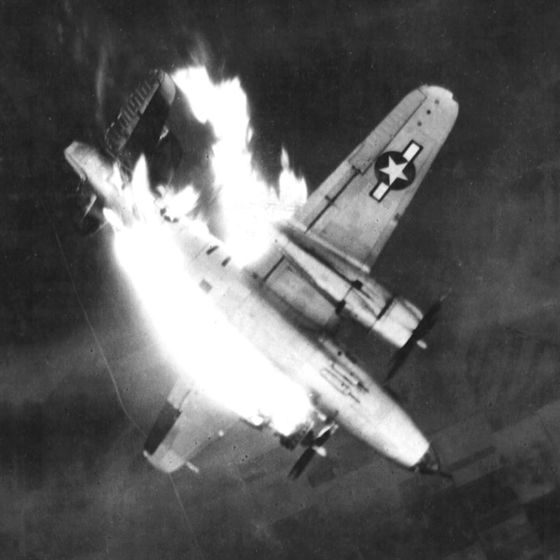 Many performances in Stuart’s Friday conference went down like this
Many performances in Stuart’s Friday conference went down like this
And this is Stuart. No longer with us but a giant who lives on my shoulders when I am at work
As I was mobilizing to go to conference, I got a call from the front desk. A Dr. Herman was on hold for me. The only Dr. Herman I knew was a recent hire, a pediatric neuroradiologist, who tended to be a little tedious. Conversations were neither short nor direct. I asked the front desk to take a message and went off to battle at the noon conference. Towards the end of the conference, the speaker, a former chief resident from 17 years earlier, showed a fascinoma, as we used to call the strange and bizarre cases. It was a head CT of a Mexican man with seizures. He had brain lesions, little bubbles surrounded by the swollen brain. He also had a few rice-shaped calcified nuggets in these brain cysts. My unfortunate colleague was flummoxed and stopped after suggesting brain metastases or maybe fungus or bacterial infection. The clues were there, but not being from Mexico or the Southwest, none of us knew that the patient had tapeworm larvae in the brain tissue. The findings were so characteristic, the next time I saw it, I would nail it in one word: “neurocysticercosis”.
Pork tapeworm larvae in the brain
And the parent…of the gag…huullchhh!!… pork tapeworm larvae
Afterward, I grabbed lunch and wandered back up to the reading room. The note at my desk read “Dr. Herman called at 11:53. Call back at 760-738-9000. “760”? I didn’t know that area code. This wasn’t St. Louis. With growing intrigue, I dialed the number and was immediately put on hold. Mercifully, there was no hold music playing. A full 5 minutes went by and Judy said: “Radiology”. Nothing more and nothing less. I said: “I’m returning Dr. Herman’s call?”. I found myself unceremoniously on hold again, this time for about 8 minutes.
Dr. Herman: “Hullo?”
Me: “Hi, Dr. Herman? I’m Steve Eilenberg from St. Louis. I’m returning your call?”
Dr. Herman: “Thanks for calling back. Can I call you Steve?”
Me: “Of course! And can I call you Rick?”
Rick: “No. I saw your name on the ACR (American College of Radiology) job board. We’re looking to hire someone with MRI training…We are in San Diego and have been renting an MRI in a truck but are installing a new MRI soon”
Me: “Great! So… is your group affiliated with a hospital?”
Rick: “Yeah, Tri-City Medical Center. Have you heard of us?”
This is Richard Herman (Doctor Herman to you). A dear friend to this day!
With eyes on San Diego, my job search was straightforward. I had asked around which were the best groups and hospitals in town. The list I got, in no particular order: UCSD, La Jolla Radiology, X-Ray Medical Group, the Sharp group, Kaiser, and Sharp Reese Steely. I was warned that La Jolla Radiology would probably not be hiring someone with my surname. Reese Sharp Steely was characterized as boring and Kaiser very chintzy with vacation. Consensus had the Sharp group on the top and they had recently hired from my residency program. Tri-City was never mentioned and not on the list.
Me: “No, I haven’t. Are you in San Diego?”
Dr. Herman: “Sure. We’re only 45 minutes north of the airport.”
I’m thinking “That’s not San Diego?!” but said: “All right! What can you tell me about your practice?”
Dr. Herman: “Well, we are a 5-radiologist group in a busy district hospital. We’ve got one outpatient office and have been reading MRIs from a truck for about 4 years. The hospital is putting in a new MRI and we’re looking for someone to run it.”
I couldn’t get past the 45-minute drive and wonder why none of my contacts mentioned Tri-City or this group, North County Radiology (NCR).
Me: “That sounds great!”
Dr. Herman: “If you want to come out for an interview, we can set things up. You’ll be hearing from Alma. I’ll have her call you. Is next month OK?”
Me: “Absolutely! Sounds great! I look forward to it”.
Dr. Herman: “ I look forward to meeting you…”
Me: “Same here! Looking forward too!”
Alma called me at work a few days later. She had worked at Tri-City Medical Center as a transcriptionist for about 25 years and had recently retired. She lived by herself in the nearby town of Carlsbad and was bored since retiring. She still did small jobs for the radiology group and recently got her travel agent license. She bragged that she really goes for value and had the perfect place for me to stay. True to her words, she booked me in the middle of nowhere and next to nothing.
My plane tickets came by mail, a few days later, along with a voucher for the Olympia Hotel and Spa. “Spa” I mouthed. “That sounds pretty good!” I flew out of St. Louis late morning, Wednesday, September 27th, two days before my birthday. I rented a white Honda Accord near the airport and headed north, to La Jolla. I wasn’t sure what to do with the two L’s but would soon learn that it meant “the jewel” in Spanish. I parked on the famed Prospect Avenue and went for a walk. Back in New Jersey, jade plants were on kitchen window sills and sported a few paddle-shaped green fleshy leaves. On Prospect Avenue, jade plants were barrier shrubs, often next to towers of bougainvillea with their white, coral, and red flower “leaves”. Every block or two, the smell of jasmine wafted over. I saw a heavily tanned, older guy with long white hair and a cockatoo on his shoulder. I passed an old lady, hunched forward but sporting a big smile. Was she deranged? Where I came from, hunched old people only scowled. This was all very foreign and weird. Good weird, but weird nonetheless.
I got back into the Honda and took old Highway 101 up north and for the next 45 minutes, passed VW microbuses, surfers, runners, bikers, and assorted beach dwellers. I was sick with envy even knowing I was moving here. Del Mar, Solana Beach, Cardiff, Encinitas, South and then North Carlsbad, and finally my turnoff for the Spa! It’s said that the temperature rises by about a degree each mile inland from the beach and it was about 13 degrees warmer when I pulled into the expansive asphalt parking lot of the Olympia. Alma told me that it was only a 15-minute drive to the hospital and told me how to get there. I decamped from the car, readied my interview suit, and headed back out west for Chinese food at Chin’s Szechwan in Carlsbad. The potstickers were quite good and after a twilight beach walk, headed back to the Olympia.
Olympia Spa and Resort today.
I looked over my interview outfit. I wore the jacket at my wedding the previous year. It was a nubby silk taupe and black matte weave. Our July 1st wedding the previous year broke us and this was all I had. Good thing I hadn’t sprung for a tuxedo.
After some bad coffee and a cold, sweating cinnamon roll at the Olympia’s continental breakfast, I headed off to the hospital.
I parked in the patient’s parking lot and approached the self-opening front doors. After a moment’s pause and a slight hand wave, it yielded. A senior volunteer in a red theatre usher-style jacket mistakenly directed me to the drab Radiation Oncology department in the basement. I would soon learn that that department was run by a sloth of a human named David Boyd. The gal at his front desk was able to direct me back upstairs to the Radiology Department and I found a sign for the reading room where radiologists toil in their hot, dusty, windowless environment.
I knocked. No answer. I opened the door and walked in. I entered the reading room and stood behind Dr. Bruce who was reviewing an 8 panel MRI. Standing there for about 2 minutes, Bruce must have felt my eyes on the back of his head. He swiveled around to glare at me. Thinking I was a poorly dressed equipment salesman or film vendor, he shooed me back into the hallway, my extended hand un-shaken and my mouth ajar. He warned me to make an appointment next time. I told him I was here for an interview and asked if Dr. Herman was in the department. He said no, that he was at a medical conference in Boston. Apparently, Dr. Herman didn’t remember that I was coming and failed to alert the group. I knew that Dr. Borros was the group leader and asked for him. He too was out of town and didn’t know about the interview either. Thinking this a bad omen, I considered leaving and going for an ocean swim but Dr. Bruce finally invited me back into the reading room for a chat. But first, he wanted to finish his MRI dictation.
An ankle MRI hung in front of him. From 5 feet away, I saw that one of the foot tendons was very worn and was about to break. Meanwhile, he was dictating a normal report. This was my second dilemma within two minutes. Do I look like a prick and point out the abnormality or let it slide? After all, if I was never there, my silence would yield the same outcome. Unable to bite my tongue, I found myself saying “When you’re done with that case, can I get a copy of it for my teaching file?”. Bruce said: “Oh…? What do you see?”. I showed him the finding like I was discovering a black hole or something. He rewound the Dictaphone tape and inserted my very words. The pessimist in me yelled, “Go body surfing! This is crazy!”. The optimist said “This group really needs you. This is a good sign!” After some small talk, Bruce told me he was the ultrasound maven. Apparently, that was the short straw he had drawn.
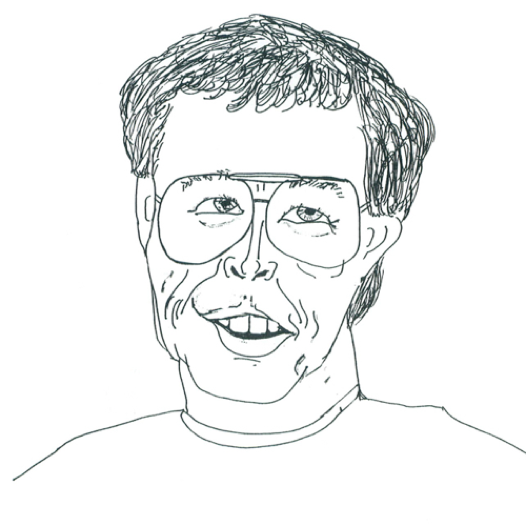 Dr. Bruce, the Ultrasound maven
Dr. Bruce, the Ultrasound maven
Minutes later, a head CT from the emergency room came. A young Mexican male was found down, after a seizure. It was the spitting image of that exotic worm-infested brain I’d seen at Stu’s Friday conference not one week earlier. Excitedly, I offered up…” You know, I think this could be neurocysticercosis!” To which Dr. Bruce responded “Probably…”. I was expecting a medal and immediate hiring but little did I know that this diagnosis came across his desk about 2 times a day due to the proximity to Mexico and the large Hispanic population Tri-City serviced.
Dr. Cline, the group’s most senior member, emerged from his office and I was introduced as “The kid’s here for an interview…”. Cline let out a brief quiet laugh. I soon learned that some years earlier, he had drawn the short straw for breast imaging. Way back when, he joined a solo radiologist who had the hospital contract locked. This radiologist, Dr. Medfly, I would eventually learn, was a pathetic dinosaur and proud of it. He was disagreeable, bigoted, and anti-Semitic with a healthy dose of misogyny thrown in for good measure. Some years later, I would hear a memorable story from a young female technologist who interviewed for a position in his department. She was told to stand on his desk, lift her skirt, and pirouette around for inspection. Medfly was also notorious for hiring freshly minted radiologists at a very low starting salary and firing them at their first anniversary, just before the next year’s salary hike and contractual job security. Predictably and on schedule, Medfly fired Dr. Cline at year’s end, but Cline refused to leave and instead told Medfly that he was fired. With this inauspicious start, the duo built the group up to five radiologists. Medfly eventually quit and retreated to an off-campus office where he eked out a marginal practice and left his wife for his office manager. Medfly was replaced by Dr. Herman who, you will recall, invited me for this interview.
I took stock of the group. I’d only met Drs. Cline and Bruce. Borros and Herman were out of town and the fifth, Dr. J, was off for the day and not coming in to interview me. They told me that he was “the smart one” and that his “short straw” was pediatric radiology.
Dr. Borros. The group’s terrorist with a black helmet of hair
Cline disappeared back into his office where he would highlight Journal articles but never apply this knowledge in practice. With noon approaching, Dr. Bruce took me to the cafeteria for lunch. Thursday at Tri-City Medical Center was Mexican food day. The cafeteria had “Chef Don” who had really turned things around in the food department. The food was great but Bruce told me not to get used to it as Chef Don was on his way out. After umpteen complaints of sexual harassment, hidden video cameras were installed in his office, a trailer next to the doctor’s parking lot. The footage was reported to be very graphic and highly entertaining and led to his firing. It was also rumored that he didn’t wash his hands.
Chef Don making a soufflé
Over lunch, Bruce told me about his time in Lubbock, Texas where he owned a car wash franchise. There was a small problem with the soap. It stripped the car’s clear coat off. Loyal customers with damaged cars opened a class action lawsuit and it didn’t end well.
“Easiest money you will ever make”
Halfway through this story, Carmen, the head radiology nurse, found us in the cafeteria. She was furious:
Carmen: “Dr. Bruce, I have your angio patient prepped and ready and on the table. We’ve been waiting for a half-hour. Are you even wearing your pager?”
Bruce: “Can’t you see I’m busy? I’m interviewing the kid here! I’ll come up when I’m ready!”
Me: “An angio? I love angio! Need a hand? Let’s go back…”
Bruce: “They can wait!”
As 2 pm approached, I met with Eileen, the group’s office manager. She was a shrewd single mother of three and largely ran the group and headed up the billing office. Dr. Bruce told me two salient stories about her. First, her husband left her for her best friend, and second, she “may have” stolen the hospital’s thick disciplinary file on Dr. Borros. This act of loyalty led to her promotion from obscurity to the group’s office manager.
I milled around the department for the next hour or so, not knowing what to do. Customarily, a group would take the applicant out to a nice restaurant. Over wine and good food, they would show how congenial and desirable they were and the applicant would try to do the same. As I was about to leave, Dr. Cline, almost as an afterthought, called me over and asked if I Iiked Mexican food. Buoyed and relieved I said “absolutely!” He suggested I take myself out to Fidel’s Restaurant, “If you liked chef Don’s lunch, you’ll love Fidel’s”. I went by myself and it was.
My interview dinner with myself. I would hire me if I could!
I woke up Friday morning deflated and conflicted. It was my birthday and I considered Chef Don’s tamale to be the highlight of my interview trip. I didn’t have a job but was moving to San Diego the next year. There was no reason to go back to Tri-City and I had an interview later that morning at UCSD.
The UCSD interviews were brief. The department was forewarned that “Steve is definitely destined for private practice, so don’t waste your time trying to recruit him”; they didn’t, and I wasn’t. They asked where I had interviewed. I told them Tri-City. This brought out a knowing smile and two comments “Oh, Tri-Shitty!” and “Yeah, we see all of their mistakes”. Well, that felt good to hear!
I drove back to the Olympia Spa late that afternoon. The front desk had a message for me. It was from Alma, the group’s travel agent. Turns out, she saw my application and remembered that it was my birthday. She invited me to her home for dinner. We had spoken once before and all I knew was that she was friendly with an unusual old lady voice. When I arrived at her Spanish-style Carlsbad home, Alma welcomed me with a big hug. She had close-cropped white hair, just broke 5 feet and after each sentence, let out a silent laugh through a crooked half-opened mouth. It came like “Hhhhhhhhhhhhhhaaaa”. She was a lovely cartoon character of a person, reminding me of a cabbage patch doll. She brought out a small carrot cake after the pot roast and boiled potatoes. When she said, “Let’s get naked and go swimming”, this was followed by another long exhale of a laugh. I didn’t, but she did. Thanks for that memory!
Epilogue
After perhaps one of the worst radiology job interviews in modern history, I did get an offer from the Tri-City group. I convinced myself it would turn out great. After all, the group’s quality could only go up. Given its small size of 5 radiologists, I could make a big difference. They were also hiring an interventional radiologist from UCSF and he was of the highest quality. Surely, the old radiologists would soon retire and the two of us could replace them with like-minded, excellent candidates.
My logic was faulty:
- Trying to fundamentally change corporate culture from within was not possible. Note to self: Next time, start with a company where you are already philosophically aligned and tweak it from there.
- I was sure the old radiologists would soon retire. They never left! Instead, they held on and resisted change tooth and nail.
- Hire like-minded new people: Well, like attracts like and our new hires were younger versions of the old obstructionists.
- I developed a practice within the practice that was so lucrative, they would leave me alone. I didn’t know who I was dealing with!
- I was convinced all radiology practices were like this (e.g., M.D.s who thought they were adept businessmen) and that if I changed jobs, it would be the same, just with different cast members. This turns out not to be universally true!
With PTSD and depression chewing at my heels, I added another item to my bucket list. I became obsessed with early retirement. This group was out of control, dysfunctional, and only getting worse with each passing year and each new bad hire. I was outgunned and outnumbered and after 15 (mostly) horrible years gave up and made a lateral move from Tri Shitty to Scripps Clinic where I have been luxuriating for the past 15 years.
What I have learned:
- Keep your eyes wide open
- Don’t lie to yourself. If you have to convince yourself that some poor option in front of you is OK, or “better than OK”, step back and be truthful with yourself.
- Try to surround yourself with excellent people and hopefully role models. In time, try to be a role model yourself.
- Ars longa, vita brevis. (taken from Hippocrates)
-Steve



